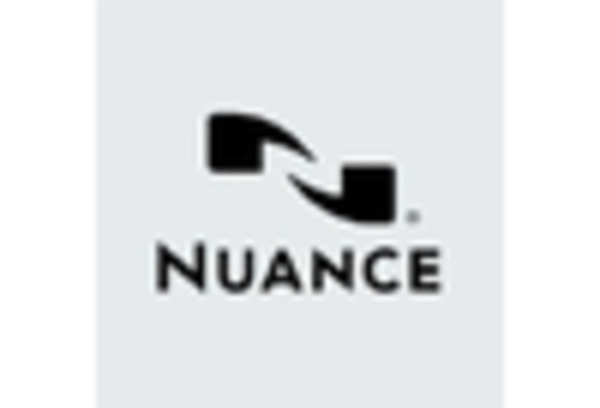Increased Focus on Customer Experience
The interactive voice-response market is increasingly influenced by the growing emphasis on customer experience. Businesses are recognizing that effective communication channels are essential for customer satisfaction and retention. Interactive voice-response systems facilitate 24/7 availability, allowing customers to access services at their convenience. Research indicates that companies that prioritize customer experience can achieve revenue growth of up to 10% annually. As organizations strive to enhance their service offerings, the demand for sophisticated interactive voice-response solutions is likely to rise, further propelling market growth.
Integration with Omnichannel Strategies
The integration of interactive voice-response systems into omnichannel strategies is becoming a significant driver in the market. Businesses are increasingly adopting a holistic approach to customer engagement, where voice interactions complement other channels such as chat and email. This integration allows for a seamless transition between different communication methods, enhancing the overall customer journey. Data suggests that companies employing omnichannel strategies can retain 89% of their customers, compared to 33% for those with weak engagement. Consequently, the interactive voice-response market is poised for growth as organizations seek to create cohesive customer experiences.
Growing Adoption of Cloud-Based Solutions
The shift towards cloud-based solutions is a notable trend impacting the interactive voice-response market. Cloud technology offers scalability, flexibility, and cost savings, making it an attractive option for businesses of all sizes. The market for cloud-based interactive voice-response systems is expected to grow significantly, with projections indicating a CAGR of 20% over the next five years. This growth is driven by the increasing need for remote accessibility and the ability to integrate with other cloud services. As more organizations migrate to cloud platforms, the interactive voice-response market is likely to expand accordingly.
Rising Demand for Cost-Effective Solutions
Cost efficiency remains a pivotal driver in the interactive voice-response market. Organizations are continually seeking ways to reduce operational costs while maintaining high service quality. The implementation of interactive voice-response systems can lead to significant savings, with estimates suggesting that businesses can reduce customer service costs by up to 30% through automation. This trend is particularly pronounced in sectors such as telecommunications and banking, where high call volumes necessitate efficient handling. As companies recognize the financial benefits, the interactive voice-response market is expected to witness robust growth.
Technological Advancements in Voice Recognition
The interactive voice-response market is experiencing a surge due to rapid advancements in voice recognition technology. Enhanced algorithms and machine learning capabilities are enabling systems to understand and process natural language with greater accuracy. This improvement is crucial for businesses aiming to provide seamless customer experiences. According to recent data, the market for voice recognition technology is projected to grow at a CAGR of 17.2% from 2023 to 2028. As companies increasingly adopt these technologies, the interactive voice-response market is likely to expand, driven by the demand for more efficient and user-friendly interfaces.

















Leave a Comment